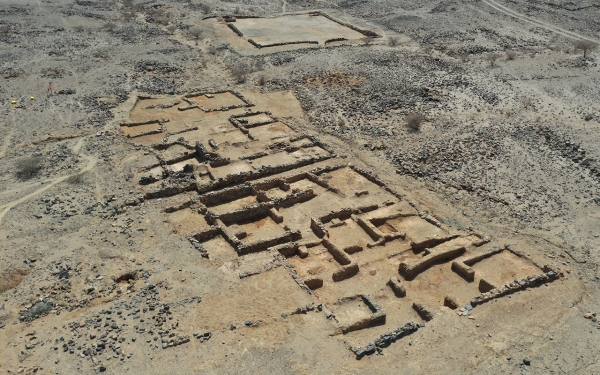

Al-Ablaa is an archaeological site located on a white mountain at the top of Ranya Valley, which is administratively affiliated with Bisha Governorate, in Aseer Province, southwest of the Kingdom of Saudi Arabia. The site dates back to ancient Arab kingdoms. Al-Ablaa was known as a market in the pre-Islamic era. It is also one of the ancient mining locations, and a thriving economic center with its commercial, agricultural, and pastoral components.
Historical studies and research about human habitats in the villages of northwest Bisha transformed al-Ablaa historical site into a favorable environment for monitoring. The economic activity flourished in the southern kingdoms, which were established in al-Ablaa. The site was of importance during the trade of the Quraysh. However, with the advent of Islam, its importance and status declined, despite being a consistent location for settlements.
Mining in al-Ablaa historical site
Al-Ablaa carries historical significance due to its gold and copper mines. Through surveys, al-Ablaa was registered as one of the ancient mining locations. Furthermore, gold ores were transferred from areas near the site, and excavations to track gold veins range between 3 and 25 m, and are as deep as 75 m in some, while reaching 150 m in length.
The most notable feature of the site is the high number of smelting places, which are the remnants of furnaces that were used to smelt minerals. However, the remaining ruins suggest that al-Ablaa was busy year-round. It is safe to assume that several neighborhoods existed, and each one was connected to a profession related to mining, such as blacksmithing, carpentry, and pottery, in addition to supporting professions like building and fueling furnaces to smelt and extract metals.
Ancient copper mine in al-Ablaa
Recent studies indicate the presence of a fluorite deposit at the ancient copper mine in al-Ablaa, where extensive mining works were discovered. This evidence suggests that the inhabitants at the time mined fluorite and used it to smelt metals.
The site survey revealed other characteristics related to mines, such as rectangular buildings, approximately three hundred, with rooms that are 4*3 m in size. The remnants of the wall courses indicate the high quality of their construction.
Monuments in al-Ablaa
Historical al-Ablaa contains several monuments, including the ruins of an ancient market, the foundations of a mosque dating back to the early Islamic era, a large millstone, a number of mills and pestles used for grinding mineral ores for smelting, and three carved wells at the top of the mountain for extracting minerals.
Related quizzes
Related articles
